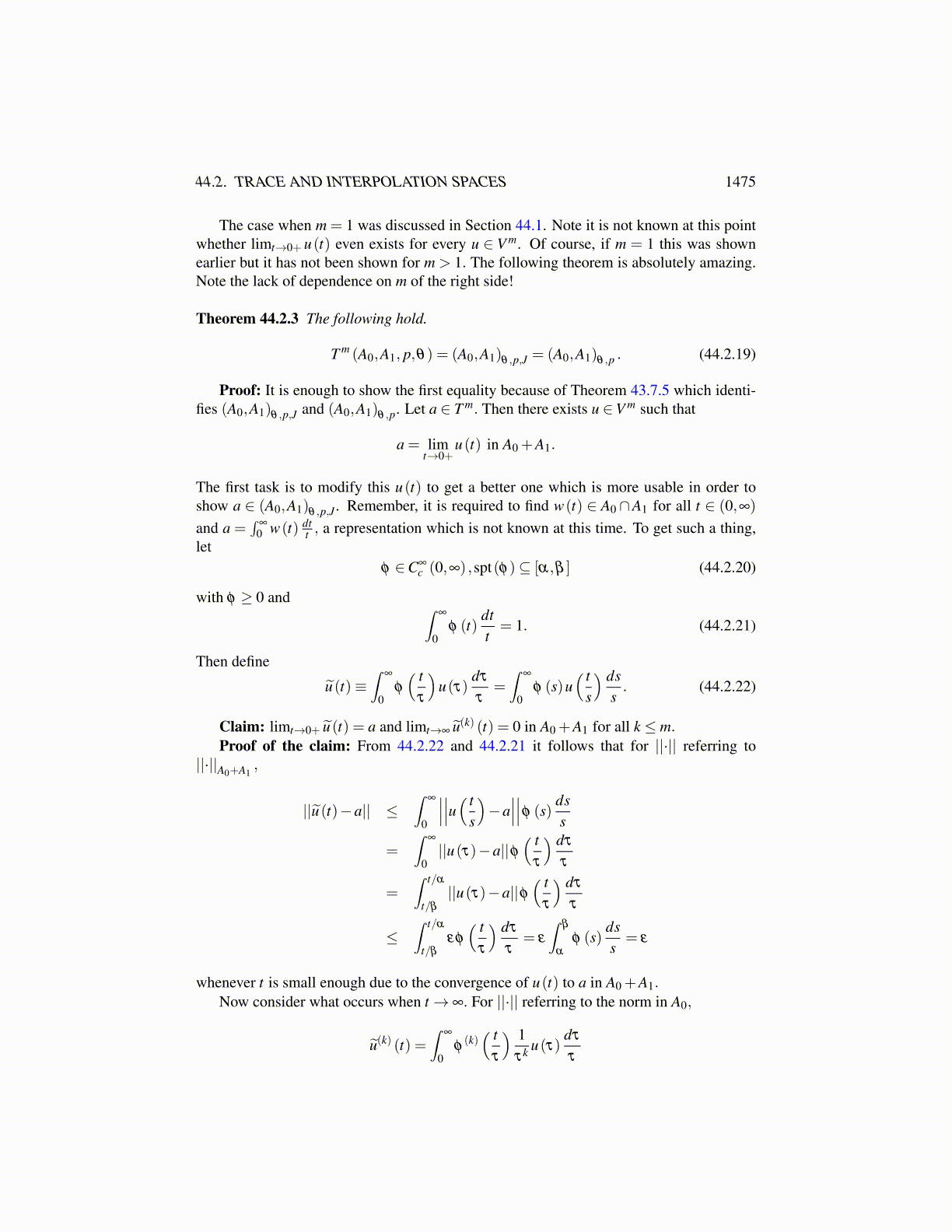
44.1. DEFINITION AND BASIC THEORY OF TRACE SPACES 1475
Now || f (t)||A0+A1≤ || f (t)||A0
.
||a||A0+A1≤ tν || f (t)||A0+A1
t−ν +Cν t1−ν p′ || f ||W≤ tν || f (t)||A0
t−ν +Cν t1−ν p′ || f ||W
Therefore, recalling that ν p′ < 1, and integrating both sides from 0 to 1,
||a||A0+A1≤Cν || f ||W ≤Cν (||a||T + ε) .
To see this,
∫ 1
0tν || f (t)||A0
t−ν dt ≤(∫ 1
0
(tν || f (t)||A0
)pdt)1/p(∫ 1
0t−ν p′dt
)1/p′
≤ C || f ||W .
Since ε > 0 is arbitrary, this verifies the second inclusion and continuity of the inclusionmap completing the proof of the theorem.
The interpolation inequality, 44.1.7 is very significant. The next result concerns bound-ed linear transformations.
Theorem 44.1.10 Now suppose A0,A1 and B0, B1 are pairs of Banach spaces such that Aiembeds continuously into a topological vector space, X and Bi embeds continuously into atopological vector space, Y. Suppose also that L ∈L (A0,B0) and L ∈L (A1,B1) wherethe operator norm of L in these spaces is Ki, i = 0,1. Then
L ∈L (A0 +A1,B0 +B1) (44.1.11)
with||La||B0+B1
≤max(K0,K1) ||a||A0+A1(44.1.12)
andL ∈L (T (A0,A1, p,θ) ,T (B0,B1, p,θ)) (44.1.13)
and for K the operator norm,K ≤ K1−θ
0 Kθ1 . (44.1.14)
Proof: To verify 44.1.11, let a ∈ A0 +A1 and pick a0 ∈ A0 and a1 ∈ A1 such that
||a||A0+A1+ ε > ||a0||A0
+ ||a1||A1.
Then||L(a)||B0+B1
= ||La0 +La1||B0+B1≤ ||La0||B0
+ ||La1||B1
≤ K0 ||a0||A0+K1 ||a1||A1
≤max(K0,K1)(||a||A0+A1
+ ε
).
This establishes 44.1.12. Now consider the other assertions.